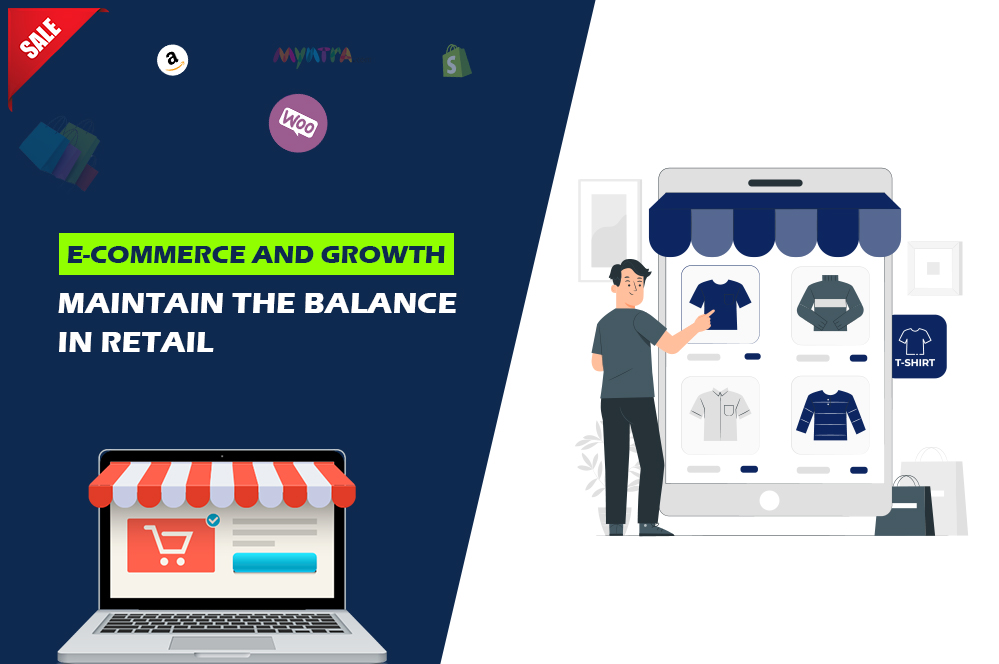
E-commerce has significantly changed not just business models, but it has transformed consumer behaviour in ways never thought conceivable, and has shifted incredible amounts of retail from physical buildings to digital. It continues to grow by the minute, and technology continues to improve. The pace of e-commerce growth places this sector among the most dynamic in the world’s economy. This article will highlight the e-commerce growth, benefits and challenges, and forecast trends.
1. What is E-commerce?
E-commerce is a kind of trading that defines individuals, companies, and other entities who are on the internet for the purpose of buying and selling products or services. It could encompass the various approaches to business models, such as:-
B2C : firms sell products or services directly to consumers.
B2B : Business to Business B2B a business is selling to a business. Some examples are Alibaba and Global Sources.
Consumer to Consumer : Sale is between consumers with each other. Examples include eBay or Craigslist who could be facilitating the transaction.
That is to say, D2C means manufacturing companies are the direct seller to the consumer and are skipping traditional retail. That could be actually just as simple as Nike’s online store.
2. Growth of e-commerce

It is clear as a day that e-commerce, in the past ten years, has witnessed a factual increase in the number of users in the sector. In the year 2020, it went to an even higher level because of the pandemic, whereby people were educated about the lockdowns and social distancing through online shopping. Some of the driving factors for exponential growth in e-commerce are:
Mobile technology : an increasing number of individuals own smartphones and consumers can now shop anywhere, anytime. It is now simply unimaginable to consider the ease of doing online shopping given mobile friendly websites and apps.
The level of Internet connectivity;
3. E-commerce Benefits
E-commerce has a number of advantages accruable to the businesses and buyers alike, including, but not limited to, the following.
Global Reach : Online stores are not restricted by geography. This means businesses can have access to the global market, and the customer can shop from international brands.
Low costs : E-commerce eliminates a physical store. No rents or utility costs must be paid; hence, it is pretty easy for businesses to cut prices in order to maintain competitiveness.
Personalization : Data analysis can be applied to e-commerce sites for recommending items to a particular shopper based on his/her preference, purchase history, and browsing behaviour. This improves customer experience.
Convenience : electronic commerce allows the good accessibility of goods and services anytime, to have price comparisons with much ease, and even option.
4. E-Commerce Challenges
In Spite of such advantages, there are certain disadvantages of e-commerce:-
Logistics : Companies will have to ensure that delivery is done on time. This is all the more critical in the case of international orders. More importantly, “last-mile” delivery is one single point that determines client satisfaction.
Cybersecurity threats : The more the online transactions take place, the greater would be the probabilities of data breach and fraud, among other forms of cyber-attacks. Ensuring sensitive data on customers is kept secure becomes cardinal.
Customer trust means the problems are on the side of the customers in developing confidence with a particular customer service since they cannot see or try the product in person. Negative review, delayed shipping and poor quality of products has adverse effects on brand reputation.
Competition : E-commerce is a very competitive business. Every day, new businesses are set up. In order to be successful, one needs to be differentiated on good customer service, niche, or unique products.
5. Future Trends in E-commerce

Technological advances create trends that will ultimately lead to future innovations in the field of e-commerce:
Artificial Intelligence and Machine Learning : The introduction of AI chatbots, virtual shopping assistance, and product recommendation technologies, increase ‘Convenience’ when undertaking shopping behavior. When leveraging machine learning technology based principles, organisations can identify greater efficiencies in their supply chain and product management.
Voice Commerce : The growing use of smart speakers, from Alexa to Google has changed how consumers search and purchase products using their voice. Consumers may buy products through ‘hands free’ technology which takes the future implications of ‘Convenience’, to a new level.
Augmented Reality : AR tools allow for consumers to “see before they buy”. For example, furniture companies like IKEA have released AR tools that allow consumers to see how a product will fit in their own homes.
Sustainability : The conscious consumer demands consideration of environmentally friendly products and purchasing goods in environmentally friendly packaging. Brands that offer sustainable product options, are creating increased consumer trust and loyalty.
Omnichannel Experience : The simplicity of transiting between an organisation’s online and offline existence will be more evident. In particular, the different click-and-collect services, increasing the facilitation of clicking an item and then collecting it in-stores, will be seamless from its on-line existence to its in-store existence.
6. Conclusion : E-commerce, no doubt, changed the retail environment and allowed the potential for all businesses to now enter the global marketplace, while being that much more convenient for the consumer. When there is that much demand, it is almost assured there will be intense competition and there is always a reason and opportunity for innovation. Only the businesses that either jail the most of the new trends and features, or place the most importance and value on an ultimate customer experience, will thrive in this fast-paced changing environment.





 Book call
Book call



